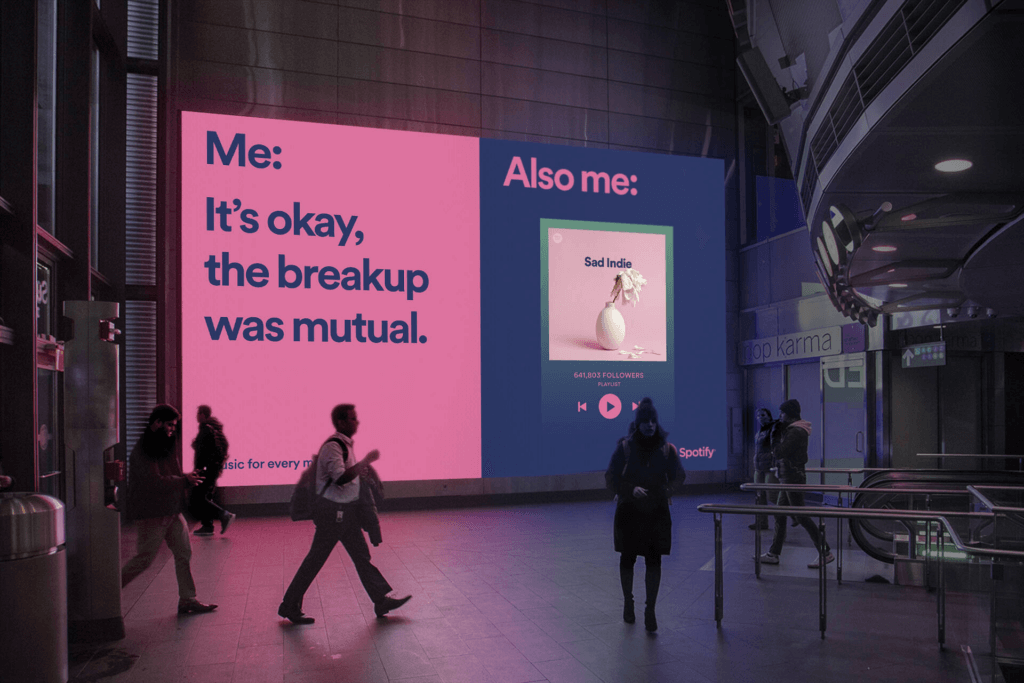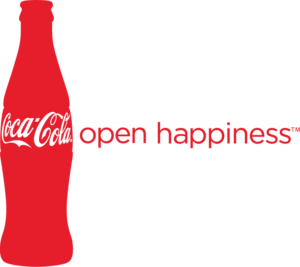
77% of consumers make a purchase based on the name of a brand.
Ever wondered why some brand names are synonymous with the product itself? How does ‘cola’ represent all soft drinks?
How does one ask for a Band-Aid and not an adhesive bandage?
Watching TV is now associated with Netflix? These brands and more, have all gained success through smart brand advertising. Brand awareness through advertising can influence consumer lifestyles and purchase patterns to the point where they don’t have to think twice about becoming a customer again and again.

What is brand advertising?
Brand advertising, also known as brand marketing or brand promotion, is a strategic marketing approach that focuses on promoting and building the overall identity, image, and perception of a brand. Unlike direct response advertising which aims for immediate sales, brand advertising aims to create a strong and positive association between a brand and its target audience over the long term.
Why do Brands Matter?

Think of it this way, you feel like having fast food today, did you think of Macdonalds? Or, if you want to listen to music, you might go to your Spotify app. One might wonder why is that. As humans, we have a tendency to react in a certain way. In this instance, the perception of these brands in our heads is so strong that naturally one of would think of them.
Naturally, one might inquire, what underscores the significance of brands? What roles do they fulfil that render them indispensable to marketers? A comprehensive exploration of the value of a brand necessitates considering viewpoints from both consumers and enterprises. Let us discuss the consumer’s aspect first.
Importance of Brand Advertising for Consumers
Brand advertising is crucial to add a long-term impact on customers. It helps companies to reach a wider audience, make their product or service recognizable, build a relationship with customers and make their brand superior to others. So, it would be beneficial to add this to the company’s overall marketing strategy.
The thing is, brands take on special meaning to consumers. Because of past experiences with the product and its marketing program over the years, consumers find out which brands satisfy their needs and which ones do not.
The thing is, brands take on a distinctive significance in the eyes of consumers. Guided by their past interactions with products and the narratives woven around them through the marketing endeavours of these brands, consumers narrow down to which brands genuinely resonate with their needs and aspirations, while identifying those that may not quite hit the mark.
When making a purchase, if a consumer recognises a brand and has some existing information about the brand itself- how good is it? is it sustainable? does it value inclusivity? do they make quality products? Is there an emotional connection or a promise with the maker of the product?
Having this prior knowledge, consumers can easily make the decision without having to spend a lot of time and mental energy thinking deeply. The brand acts as a reliable cue, simplifying the decision-making process.
Thus, from an economic perspective, brands allow consumers to lower the search costs for products both internally (regarding how much thought they have to put into it) and externally (regarding if they should explore other brands).
A 2022 survey showed that 94% of consumers say that how brands treat their consumers influences their purchase decisions. Making it critical for a brand to simplify decision-making and provide high-quality services or products that enrich their lives and day-to-day activities.
Now, imagine creating a new product and having to demonstrate it to your target market from scratch every time. That is what life would be like without brands. Companies often like to visit kyckstarts.com to learn how to best go through this process with the guide of professionals. When you successful incorporate your existing story with new narratives, you get what we call brand advertising. The trust of the customer to that product is established, as well as familiarity with the special qualities of that brand’s story.

Top 3 Advantages of Brand Advertising
Wider customer reach
Companies use brand advertising through various channels TV, and social media like Facebook, Instagram, Twitter, and YouTube which are popular means of advertising and successful to reach a wide range of customers because the more they see your brand on different channels, the more familiar they are with your products and services which automatically boosts their confidence to buy the product. Without advertising how do customers know that a brand exists and how they will buy directly? They will intend to buy when they will be familiar with them because the future of branding is personal.
Build relationships with customers
Businesses that are ambitious to make their brand memorable and unique consistently focus on customers’ emotional and intellectual levels which have become easy with technological advancement. Technology has made a major shift in influence like marketing a product’s functional value to its emotional value by using slogans and building relationships with customers easily Coca-Cola selected slogans things to go better with Coke, open happiness, taste the feeling connects the people through emotional touch that we are noticing year over year. To be competitive, the company should not only do better but do differently by using brand advertising which is easy in today’s world with the help of technology.
Competitive advantage
Brand advertising, including the use of a product launch checklist, is an effective tool to make the brand superior to those of competitors, especially during the launch of a new product. Through advertising, the company’s product or service is perceived as unique in the eyes of customers, creating a long-lasting impact that enhances the brand’s credibility. This, in turn, leads to increased sales and overall profit for the organization because the loyalty of customers adds value to the brand. Therefore, companies that want to take long-term benefits and avoid their brand from becoming invisible to the world should initiate brand advertising during a product launch, allowing them to flexibly survive in today’s cut-throat competition.
3 Easy Ways to Build Brand Awareness Through Advertising
The importance of brand advertising is to build a long-lasting brand identity, for which, it is very crucial to build awareness. Here’s how a brand can create awareness.
Master storytelling
People enjoy hearing tales about one other, products, brands, and anything else! Brand recognition can be boosted by showing a truly honest side of the brand through storytelling. Storytelling has become a very powerful marketing approach as a result of its impact, as it provides consumers with something real to connect to. This strategy also personalizes the brand and gives it more depth. Your brand story can be about anything: the founder and his or her journey, the product, the people who work for you, and so on. Anything that is authentic and helps the audience form a connection with the company.
Select a symbol or image that reflects the brand
When we think of brands that can be recognized with just a symbol or logo, we immediately think of Nike’s checkmark, Disney’s fonts, Apple’s half-bitten apple, and McDonald’s yellow M. It can be anything, a logo, colour schemes, fonts, etc., that creates a memory about the brand for the consumer to connect with the next time they see any brand engagement.
Give your brand a personality
Infusing a personality into your marketing activities, which is constant throughout all communications and engagement, is one of the most important elements in building brand awareness. The significance of brand advertising is closely related to this. We all know that experience sells, and while the consumer notices the product, it is the feel element of the product that helps it sell, which is influenced by the brand’s personality. Consider Axe’s Axe effect campaign, which promotes its men’s hygiene product by claiming that the product’s fragrance attracts women. This advertisement received a mixed bag of favourable and adverse feedback, but it did get people talking about Axe and the Axe effect, which led to product purchases.
Campaigns that helped brands gain recognition with brand advertising

Nike – Just do it
Starting in 1988, the Nike “Just Do It” commercial featured professional and amateur athletes explaining their accomplishments and the emotions they feel when exercising. An 80-year-old marathoner called Walt Stack was featured in one of the campaign’s first television spots, telling how he runs 17 miles every morning. Stories like Walt’s move viewers, making them question, “If these athletes can accomplish it, why can’t I?”

As a result, people began interacting with Nike with individual anecdotes about how they “just did it,” whether it was quitting a job they didn’t like or building a new healthy lifestyle.
Just a few years ago, this campaign celebrated its 30th anniversary with the launch of “Dream Crazy” featuring the much-talked-about Colin Kaepernick along with LeBron James and Serena Williams. Goes without saying, this advertisement got a great response and was very successful.
Coca-Cola – Open Happiness
Coca-Cola dominates the non-alcoholic beverage market. It is one of the few non-alcoholic beverage brands that has survived since its inception. We’ve all asked for a cola, even if we meant to get a Pepsi. The brand name has been so well-known that it has become associated with the product.

With the simple tagline “Open Happiness,” Coca-Cola started an interesting and original marketing campaign in 2009. It became one of the most well-known examples of brand advertising and communications in recent history, and it aided the brand’s enormous success by engaging people all over the world. The objective of the campaign was to encourage people to find happiness in the small things in life and to spread happiness through Coca-Cola.
Coca-Cola committed heavily to marketing to ensure the campaign’s success. The campaign’s message was visible on television, outdoor, online, print, and radio advertising in a short period. Opening a Coca-Cola can be fun, and (their next campaign) sharing Coca-Cola maybe even better. To go beyond traditional marketing strategies, the campaigns integrated spectacular graphic designs with specially composed music. Coca-Cola also created a slew of music videos to promote its campaign.
GoPro – user-generated content

(Picture Source: Gorilla360)
GoPro allows its users and customers to share incredible user-generated camera footage directly on their social media sites. The GoPro editing tool makes videos with GoPro’s immediately recognizable logo and branding at the beginning and finish. This function has helped to raise brand awareness significantly. Previously, cameras that failed to consistently offer the dynamic, high-quality imagery needed to attract viewers on social media platforms frustrated many photographers, athletes, and YouTube creators.
GoPro cameras, on the other hand, are popular among video enthusiasts because they can record content that is practically difficult to capture with ordinary cameras. It’s now easier than ever to capture and share great material.
As a result, more people and GoPro customers are creating and sharing films. Users who share movies taken with GoPro cameras become brand ambassadors, promoting the company in a natural and non-intrusive way.
Why should your brand adopt brand advertising?
Brand advertising is a powerful idea that can significantly affect your marketing efforts, consumer perceptions, and revenue. If you’re advertising and marketing goals meet any of the following, then your answer is yes.
- Launch of a new product or business
- Maintaining customer loyalty and engaging your audience
- Long term and efficient increase in sales
- Building the brand’s reputation and awareness around a well-known brand
- Rebranding effort
How Brand Advertising Works
Define goals and audience
Build objectives around the campaign’s goals, such as increasing brand awareness, launching a new product, and so on. The goals are chosen to affect the target audience persona, and each part of the audience may be allocated a different business objective.
It’s essential to know your target demographic to attain these brand advertising objectives. Demographics, interests, preferred media channels, and other factors are typically included.
Brand positioning
The success or failure of a brand is determined by its positioning. Most of the time, a customer’s mental image of a product is far more significant than the product itself. Before starting a brand advertising campaign, conduct market research. Examine how competitive the market is, who your primary competitors are, what sets them apart, and who your target customers are.
Consider the brand’s current positioning and develop around it. Determine your unique selling proposition – the feature that sets your product or service apart from the competitors. Identify the emotions or sentiments associated with it — does it make one happy? A feeling of belonging? Defines one’s social standing. Is it fashionable?
Overall, a proper vision along with in-depth market research is very important to decide on a brand positioning.
Analyze and optimize campaigns
The main objective is to allocate resources properly. The size and distribution of your budget can have a big impact on the details of your brand advertising plan. Focus on the channels that perform well.
Create a strong brand advertising strategy. Work on putting this strategy into action. Create a digital advertising campaign on your chosen platform and let it handle media buying for you based on your targeting and budget. The platform will find the most suitable media and advertising content for your business and serve impressions to your target demographic.
Meanwhile, the tools and platforms for brand advertising, as well as the campaign’s duration and other details, should all be determined by the target audience. It’s also critical to develop a unique approach for each channel, considering the channel’s specifics as well as how your target audience uses it.
It is critical to closely monitor and track the campaign’s performance once it has gone live. Pay attention to how your brand’s traffic changes. Changes to little details in advertising campaigns can sometimes improve their performance, so make changes as needed. Be aware of these factors and optimize them to have a significant impact on the success of your effort.

In Conclusion
Brand advertising certainly helps create more brand awareness, expand the reach and drive conversion through convincing storytelling in the hearts of their consumers- helping form an emotional connection with them.
But brands can also serve as a symbolic device. Certain brands are associated with certain types of people (brand partnerships with famous people) and thus come to reflect certain values or traits. For consumers, buying products of these brands is a means by which consumers can communicate to others- or even to themselves- the type of person they are or would like to be.
A reaffirming reason why creating a strong sense of brand perception in the minds of consumers through advertising is crucial for the success of a brand.


